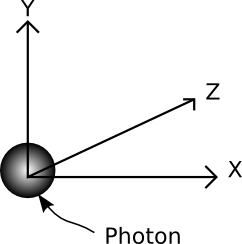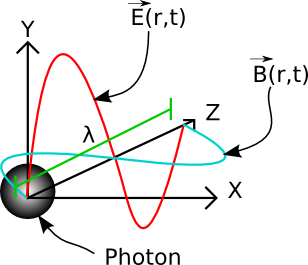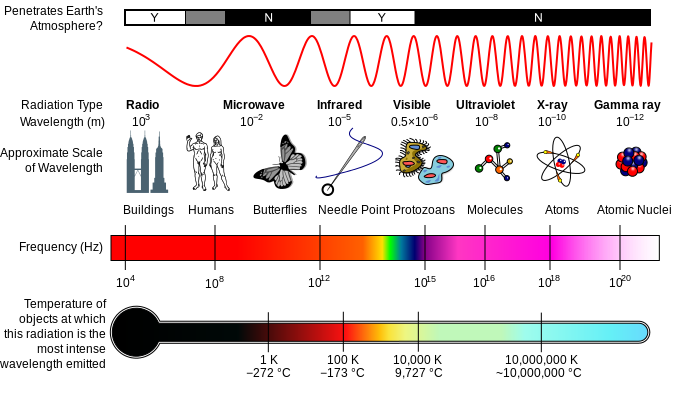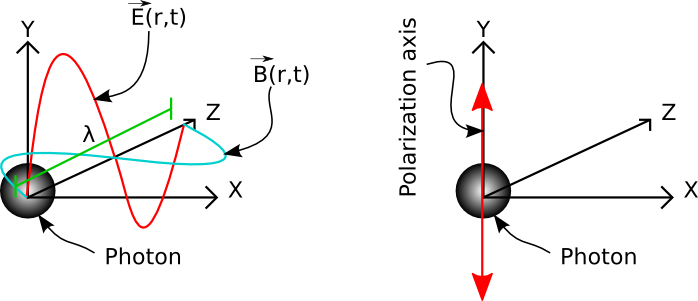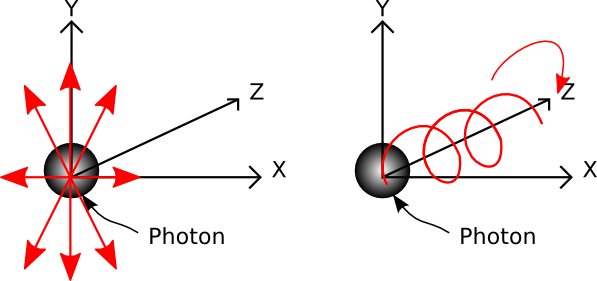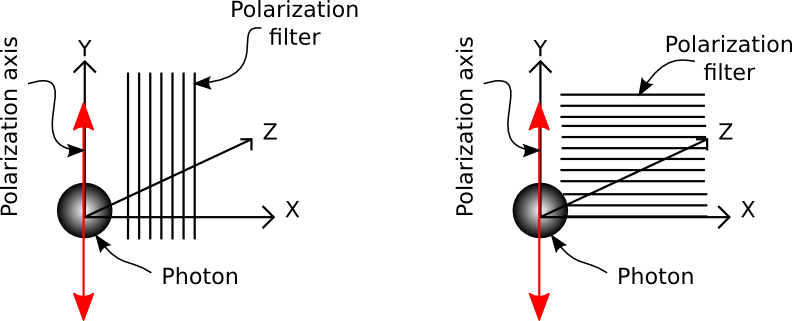Narrate section
Light, Computation, and Computational Light¶
We can establish an understanding of the term Computational Light as we explore the term light and its relation to computation.
What is light?¶
Informative
Light surrounds us; we see the light and swim in the sea of light. It is indeed a daily matter that we interact by looking out of our window to see what is outside, turning on the lights of a room, looking at our displays, taking pictures of our loved ones, walking in a night lit by moonlight, or downloading media from the internet. Light is an eye-catching festival, reflecting, diffracting, interfering, and refracting. Is light a wave, a ray, or a quantum-related phenomenon? Is light heavy, or weightless? Is light the fastest thing in this universe? Which way does the light go? In a more general sense, how can we use light to trigger more innovations, positively impact our lives, and unlock the mysteries of life? We all experience light, but we must dig deep to describe it clearly.
In this introduction, my first intention here is to establish some basic scientific knowledge about light, which will help us understand why it is essential for the future of technology, especially computing. Note that we will cover more details of light as we make progress through different chapters of this course. But let's get this starting with the following statement. Light is electromagnetic radiation, often described as a bundle of photons, a term first coined by Gilbert Lewis in 1926.
Where can I learn more about electric and magnetic fields?
Beware that the topic of electric and magnetic fields deserves a stand-alone course and has many details to explore.
As an undergraduate student, back in the day, I learned about electric and magnetic fields by following a dedicated class and reading this book: Cheng, David Keun. "Fundamentals of engineering electromagnetics." (1993). 1
What is a photon?
Let me adjust this question a bit: What model is good for describing a photon?
There is literature describing a photon as a single particle, and works show photons as a pack of particles.
Suppose you want a more profound understanding than stating that it is a particle.
In that case, you may want to dive deep into existing models in relation to the relativity concept: Roychoudhuri, C., Kracklauer, A. F., & Creath, K. (Eds.). (2017). The nature of light: What is a photon?. CRC Press. 2
Where can I learn more about history of research on light?
There is a website showing noticeable people researching on light since ancient times and their contributions to the research on light. To reach out to this website to get a crash course, click here.
Let me highlight that for anything to be electromagnetic, it must have electric and magnetic fields. Let us start with this simple drawing to explain the characteristics of this electromagnetic radiation, light. Note that this figure depicts a photon at the origin of XYZ axes. But bear in mind that a photon's shape, weight, and characteristics are yet to be fully discovered and remain an open research question. Beware that the figure depicts a photon as a sphere to provide ease of understanding. It does not mean that photons are spheres.
Let us imagine that our photon is traveling in the direction of the Z axes (notice \(\vec{r}\), the direction vector). Let us also imagine that this photon has an electric field, \(\vec{E}(r,t)\) oscillating along the Y axes. Typically this electric field is a sinusoidal oscillation following the equation,
where \(A\) is the amplitude of light, \(t\) is the time, \(\vec{r}\) is the propagation direction, \(w\) is equal to \(2\pi f\) and \(f\) represents the frequency of light.
A period of this sinusoidal oscillation, \(\vec{E}(r, t)\), describes wavelength of light, \(\lambda\). In the most simple terms, \(\lambda\) is also known as the color of light. As light is electromagnetic, there is one more component than \(\vec{E}(r,t)\) describing light. The next component is the magnetic field, \(\vec{B}(r, t)\). The magnetic field of light, \(\vec{B}(r, t)\), is always perpendicular to the electric field of light, \(\vec{E}(r, t)\) (90 degrees along XY plane). Since only one \(\lambda\) is involved in our example, we call our light monochromatic. This light would have been polychromatic if many other \(\lambda\)s were superimposed to create \(\vec{E}(r, t)\). In other words, monochromatic light is a single-color light, whereas polychromatic light contains many colors. The concept of color originated from how we sense various \(\lambda\)s in nature.
But are all electromagnetic waves with various \(\lambda\)s considered as light? The short answer is that we can not call all the electromagnetic radiation light. When we refer to light, we mainly talk about visible light, \(\lambda\)s that our eyes could sense. These \(\lambda\)s defining visible light fall into a tiny portion of the electromagnetic spectrum shown in the above sketch. Mainly, visible light falls into the spectrum covering wavelengths between 380 nm and 750 nm. The tails of visible light in the electromagnetic spectrum, such as near-infrared or ultraviolet regions, could also be referred to as light in some cases (e.g., for camera designers). In this course, although we will talk about visible light, we will also discuss the applications of these regions.
Let us revisit our photon and its electromagnetic field one more time. As depicted in the above figure, the electric field, \(\vec{E}(r, t)\), oscillates along only one axis: the Y axes. The direction of oscillation in \(\vec{E}(r, t)\) is known as polarization of light. In the above example, the polarization of light is linear. In other words, the light is linearly polarized in the vertical axis. Note that when people talk about polarization of light, they always refer to the oscillation direction of the electric field, \(\vec{E}(r, t)\). But are there any other polarization states of light? The light could be polarized in different directions along the X-axis, which would make the light polarized linearly in the horizontal axis, as depicted in the figure below on the left-hand side. If the light has a tilted electric field, \(\vec{E}(r, t)\), with components both in the X and Y axes, light could still be linearly polarized but with some angle. However, if these two components have delays, \(\phi\), in between in terms of oscillation, say one component is \(\vec{E_x}(r, t) = A_x cos(wt)\) and the other component is \(\vec{E_y}(r, t) = A_y cos(wt + \phi)\), light could have a circular polarization if \(A_x = A_y\). But the light will be elliptically polarized if there is a delay, \(\phi\), and \(A_x \neq A_y\). Although we do not discuss this here in detail, note that the delay of \(\phi\) will help steer the light's direction in the Computer-Generated Holography chapter.
There are means to filter light with a specific polarization as well. Here, we provide a conceptual example. The below sketch depicts a polarization filter like a grid of lines letting the output light oscillate only in a specific direction.
We should also highlight that light could bounce off surfaces by reflecting or diffusing. If the material is proper (e.g., dielectric mirror), the light will perfectly reflect as depicted in the sketch below on the left-hand side. The light will perfectly diffuse at every angle if the material is proper (e.g., Lambertian diffuser), as depicted in the sketch below on the right-hand side. Though we will discuss these features of light in the Geometric Light chapter in detail, we should also highlight that light could refract through various mediums or diffract through a tiny hole or around a corner.
Existing knowledge on our understanding of our universe also states that light is the fastest thing in the universe, and no other material, thing or being could exceed lightspeed (\(c = 299,792,458\) metres per second).
where \(n\) represents refractive index of a medium that light travels.
Where can I find more basic information about optics and light?
As a graduate student, back in the day, I learned the basics of optics by reading this book without following any course: Hecht, E. (2012). Optics. Pearson Education India. 3
We have identified a bunch of different qualities of light so far. Let us summarize what we have identified in a nutshell.
- Light is electromagnetic radiation.
- Light has electric, \(\vec{E}(r,t) = A cos(wt)\), and magnetic fields, \(\vec{B}(r,t)\), that are always perpendicular to each other.
- Light has color, also known as wavelength, \(\lambda\).
- When we say light, we typically refer to the color we can see, visible light (390 - 750 nm).
- The oscillation axis of light's electric field is light's polarization.
- Light could have various brightness levels, the so-called amplitude of light, \(A\).
- Light's polarization could be at various states with different \(A\)s and \(\phi\)s.
- Light could interfere by accumulating delays, \(\phi\), and this could help change the direction of light.
- Light could reflect off the surfaces.
- Light could refract as it changes the medium.
- Light could diffract around the corners.
- Light is the fastest thing in our universe.
Remember that the description of light provided in this chapter is simplistic, missing many important details. The reason is to provide an entry and a crash course at first glance is obvious. We will deep dive into focused topics in the following chapters. This way, you will be ready with a conceptual understanding of light.
Lab work: Are there any other light-related phenomena?
Please find more light-related phenomena not discussed in this chapter using your favorite search engine. Report back your findings.
Did you know?
Did you know there is an international light day every 16th of May recognized by the United Nations Educational, Scientific and Cultural Organization (UNESCO)? For more details, click here
Reminder
We host a Slack group with more than 300 members. This Slack group focuses on the topics of rendering, perception, displays and cameras. The group is open to public and you can become a member by following this link. Readers can get in-touch with the wider community using this public group.
